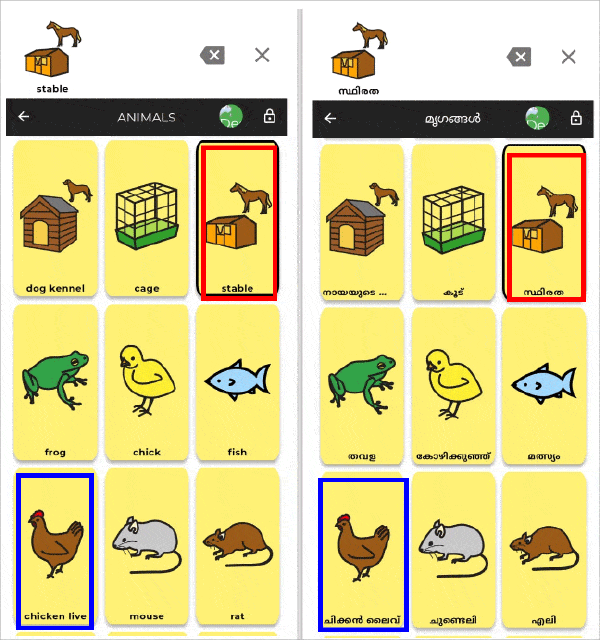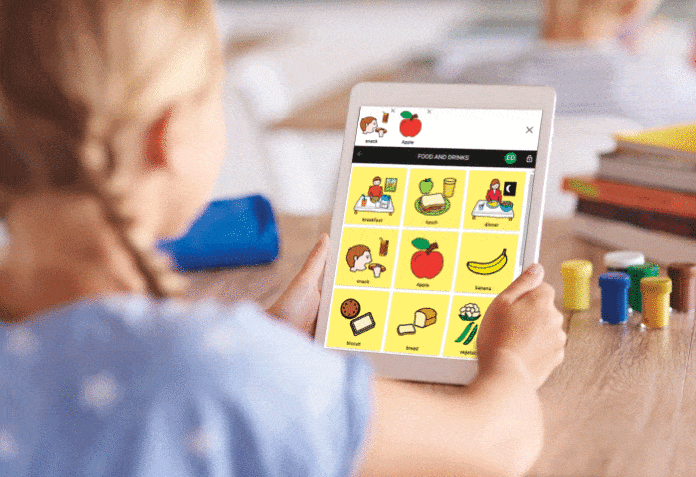Children and adults with special needs require special education. Cboard is free and open source software for special children, but a lot of work is still needed in this domain, especially in India
It is amazing to see how much selfless collective human effort can achieve. Let me give an example. Almost two decades ago, I got a CD-ROM of Encarta, a digital multimedia encyclopaedia released by Microsoft. At a time when dial-up connections were slow, internet speed was measured in kilobytes, and data was as precious as gold, this CD-ROM of Encarta was a treasure trove of information for me, a young man from a small village in Kerala. If somebody had told me that within a decade Encarta would be a commercial failure and go out of business because of an encyclopaedia written by volunteers working for free, I wouldn’t have believed them. Encarta had articles written by experts in their respective fields who were paid for their expertise, whereas the one that defeated it had content that could be edited by anyone with internet connectivity.
What is the name of the winner? Of course, it is Wikipedia. But how did this happen? How did Wikipedia become the ultimate source of knowledge in the world? It was the collective power of selfless human effort. Indeed, on many occasions, I have come across Wikipedia articles edited by Nobel laureates and Fields Medalists.
Another remarkable area where people collaborate selflessly is software development. Consider all the free and open source software available to individuals across various fields and aspects of life. Two things constantly amaze me about free and open source software. First, the exceptional dedication of numerous talented individuals who spend their leisure time on complex programming so that all of humanity can benefit. Second, the incredible range of free and open source software, from simple text editors like Nano and Atom to sophisticated operating system distributions like Ubuntu, Fedora, and Debian. This broad spectrum of software has also led to the creation of tools that are useful to even very small, specific groups of people. Moreover, software has been developed for communities that might not otherwise afford the cost of software development. While there are countless free and open source programs, our focus in this article is on software designed for special education, aimed at teaching and training individuals with neurodevelopmental disabilities such as Down syndrome, autism, and cerebral palsy.
Given the relatively low general awareness regarding these distinct conditions, all of which result in different challenges and require unique training and treatment, let us discuss them briefly before we proceed any further. Down syndrome is a genetic disorder caused by the presence of an extra copy of chromosome 21, leading to developmental and intellectual delays as well as characteristic physical features. Autism, also known as autism spectrum disorder, is a neurodevelopmental disorder characterised by difficulty in social interaction and repetitive behavioural patterns. Cerebral palsy is another distinct condition, comprising a group of movement disorders that appear in early childhood, caused by abnormal development or damage to the parts of the brain that control movement, balance, and posture. Symptoms include poor coordination, weak muscles, and tremors. I urge all readers to consult Wikipedia articles on these three conditions to learn and spread awareness among others. This would be a great service to humanity, as the training and rehabilitation necessary for these individuals are not yet adequate in India, although standards are improving.
Many individuals with Down syndrome, autism, and cerebral palsy face challenges in language formation, experiencing difficulties ranging from speaking to understanding language. These challenges significantly impact communication abilities, making the professional services of a speech-language pathologist (SLP) essential for assessment, diagnosis, and training. However, many special schools for children with Down syndrome, autism, and cerebral palsy lack the services of a full-time professional SLP due to financial constraints and a shortage of qualified professionals. This situation necessitates the use of specialised software support. In this article, we will discuss software that can help affected individuals to some extent. While the services of an SLP are ideal, the software we discuss here serves as supplementary support.
Augmentative and alternative communication (AAC) devices
A number of devices called augmentative and alternative communication (AAC) devices are used to provide communication methods that supplement or replace speech or writing for people having difficulties with spoken or written language. AAC devices can help individuals with birth conditions like Down syndrome, autism, and cerebral palsy to communicate effectively. They are also helpful to people suffering from diseases such as Parkinson’s, which can affect individuals later in life. There are two types of AAC devices: low-tech and high-tech. Low-tech AAC devices include communication boards, picture exchange communication systems, eye gaze boards, and so on, which are priced under a few thousand rupees. High-tech AAC devices include speech-generating devices, tablets with AAC apps, and dedicated communication devices, with prices ranging from a few thousand rupees to millions of rupees.
When I first learned about AAC devices used for training in many developed countries, I was saddened to recall that none of the ten or so special schools I visited in the past two decades had anything close to these devices, despite the availability of inexpensive low-tech AAC devices in the market. All they had were charts with pictures of fruits, animals, etc, hanging in the classrooms. Furthermore, the computers (at most three, often slow desktops) they had were used mostly for photo ops. I saw photos of students sitting in front of computers, looking confused at their names displayed in large font in Microsoft Word, typed by someone else. However, this lack of technology in special education could be easily overcome with free and open source software, as many such programs can emulate the specialised hardware of an AAC device on even low-end laptops. The adoption of such software would transform special education in India.
Cboard: Designed for special education
Cboard is one such highly useful free and open source software, designed as an augmentative and alternative communication (AAC) software. It allows users with speech and language impairments to communicate using symbols and text-to-speech (TTS). This cross-platform software is licensed under the MIT License. The GitHub repository for Cboard is available at https://github.com/cboard-org, and the English version of the Cboard information website is available at www.cboard.io/en.
Cboard offers a wide variety of graphical images for users to choose from, enabling them to construct fairly complex sentences by selecting these images. The application then reads out the sentences in the user’s chosen language. Cboard supports both web and mobile platforms.
In my opinion, a touchscreen laptop is the ideal device for training with Cboard, as individuals with neurodevelopmental disabilities often struggle with poor eye-hand coordination and motor skills. However, a standard laptop or smartphone can also be used for training with Cboard. Figure 1 shows a screenshot of the Settings page in the Cboard app, where you can change the language for displaying and reading text, among other options.

What surprised me when I first encountered the Cboard software was the lack of Malayalam language support. This was unexpected, considering that Kerala is a state known for excelling in education and human resource development in India. Despite this, Malayalam was not supported until a group of volunteers, including myself, made a request. The Cboard development team responded promptly, and Malayalam support was added. As of writing this article, the following Indian languages are supported: Bengali, Hindi, Malayalam, and Nepali. It was also surprising that versions of Cboard in widely spoken languages such as Tamil, Telugu, Kannada, Odia, Gujarati, and Marathi were absent. However, before making a request to the Cboard development team, please ensure that the language you need for training is not already supported.
It’s work in progress
Let me share my experience working with the Malayalam version of the Cboard software. When a request is made to support a new language, translations are automatically generated from English to other languages, but they require proof-reading, especially for Indian languages. I will provide some examples to illustrate the need for proper proof-reading by individuals with language skills. Figure 2 shows a board displaying images and names of animals in English (on the left) and Malayalam (on the right). There are multiple mistakes that need to be corrected on this board alone.
For instance, the word ‘chicken’ is labelled as ‘chicken live’ (marked with a blue box on the left side of Figure 2) in the English version. Furthermore, the Malayalam board uses a transliteration of ‘chicken live’ in Malayalam script (marked with a blue box on the right side of Figure 2). Now, consider the word ‘stable’ in the English version (marked with a red box on the left side of Figure 2). The word ‘stable’ has two different meanings in English: one referring to something “firmly fixed” and the other to “a building set apart and adapted for keeping horses.” From the image shown on the English board, it is clear that the intended meaning is the latter. However, in the Malayalam board, the incorrect translation is provided (marked with a red box on the right side of Figure 2).
Since there are numerous boards available in Cboard, a large number of volunteers are needed for proof-reading. This also demonstrates how individuals with limited technical knowledge can contribute to the development and adoption of free and open source software. Cboard uses the services of Crowdin, a proprietary, cloud-based localisation technology and services company, for the translation of boards. Crowdin facilitates the crowdsourcing of efforts from a large number of volunteers to proof-read the boards.

Cboard also uses proprietary technology for text-to-speech services, including services like Google text-to-speech, Microsoft Azure text-to-speech, and IBM Watson text-to-speech. Additionally, it leverages the built-in or add-on text-to-speech features of web browsers.
I observed some problems with the Malayalam audio rendered by Cboard. Most importantly, the pronunciation is often anglicised and difficult to understand at times. This could be an issue when training children affected by Down syndrome, autism, and cerebral palsy, who often also suffer from hearing impairments. The quality of text-to-speech in Indian languages can be improved by using larger audio datasets for training. This highlights how we can contribute to the open source community by developing audio datasets in Indian languages for training AI-based applications. Additionally, keep in mind that any issue affecting the Malayalam version of Cboard will likely affect the versions in other Indian languages as well.
Children with Down syndrome, autism, and cerebral palsy can also benefit from analysing their pupil movement while looking at a computer or smartphone screen. There are gaze tracking software available that can do this. Moreover, it can be integrated with AAC systems. Children can use their gaze to select symbols, words, or images on a screen to communicate, improving their ability to express themselves. Gaze tracking can be used to monitor and analyse eye movement patterns, providing insights into a child’s focus and attention. This data can help therapists develop targeted interventions to enhance focus and reduce behavioural issues. Gaze tracking can also be used in educational games designed to engage children.
However, my search for such free and open source software was not very promising. Many such software that can be used with normal webcams are no longer maintained regularly. The ones that are actively maintained, such as Haytham Gaze Tracker, require infrared-ready webcams. However, most standard laptop webcams are not designed for infrared imaging. They are typically designed to capture visible light in well-lit environments and lack the specialised hardware needed for infrared imaging. This makes such software unusable without additional equipment.
The research for gaze tracking software also led me to the world of specialised hardware for gaze tracking, in particular, and assistive technology, in general. I won’t mention them here as they are commercial and proprietary. However, it was truly eye-opening to learn about all the advanced technology (hardware and software) being used to train children with neurodevelopmental challenges in many developed countries. This technology in the Western world highlights two things: one, we in India need to catch up significantly in assistive technology to make it world class; and two, there is a pressing need for open source hardware designs that can be adopted at a far lower cost.
To sum up, free and open source software can help immensely in providing assistive technology, and people with minimal technical background can also contribute to the development of such software.












































































